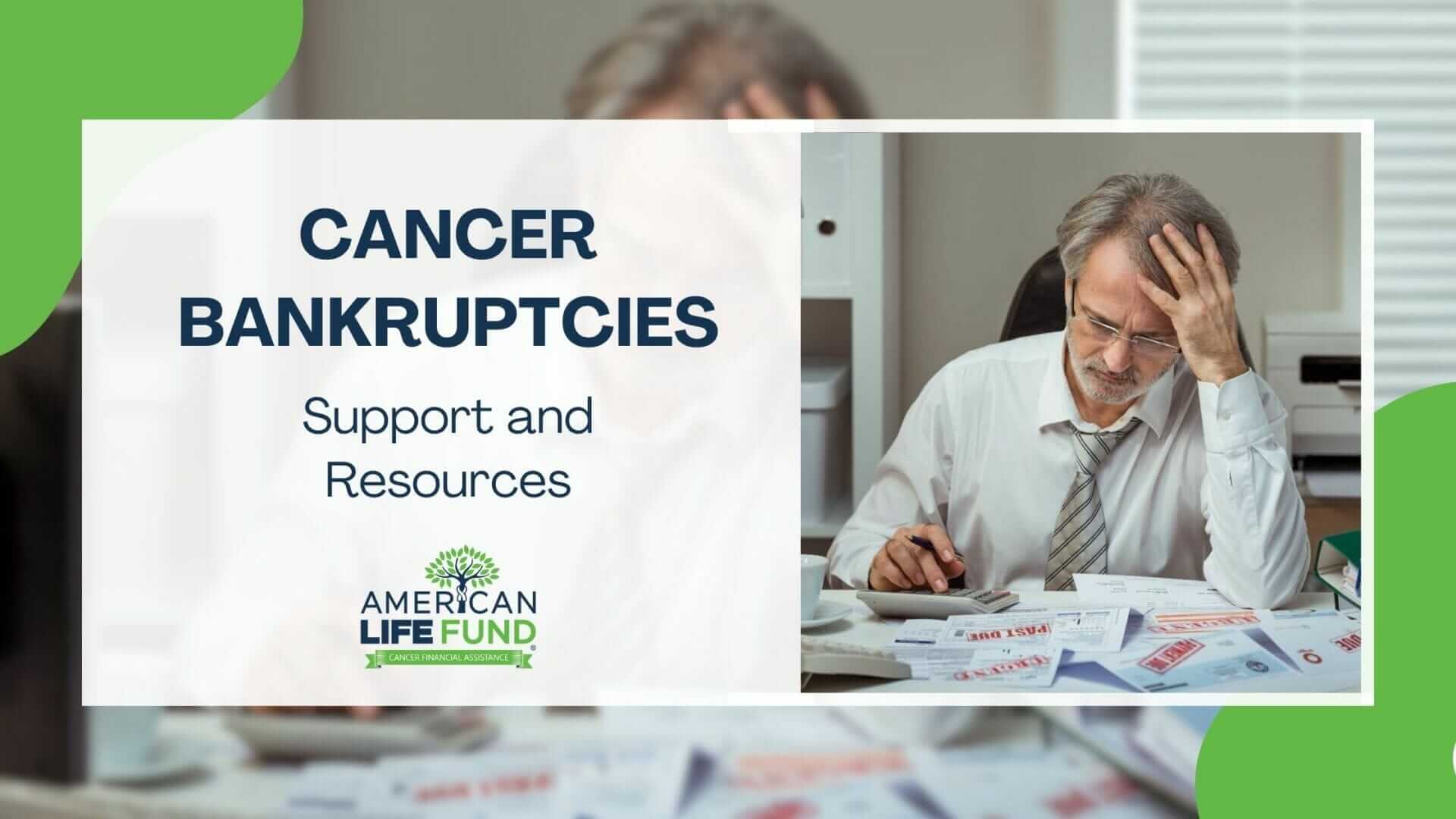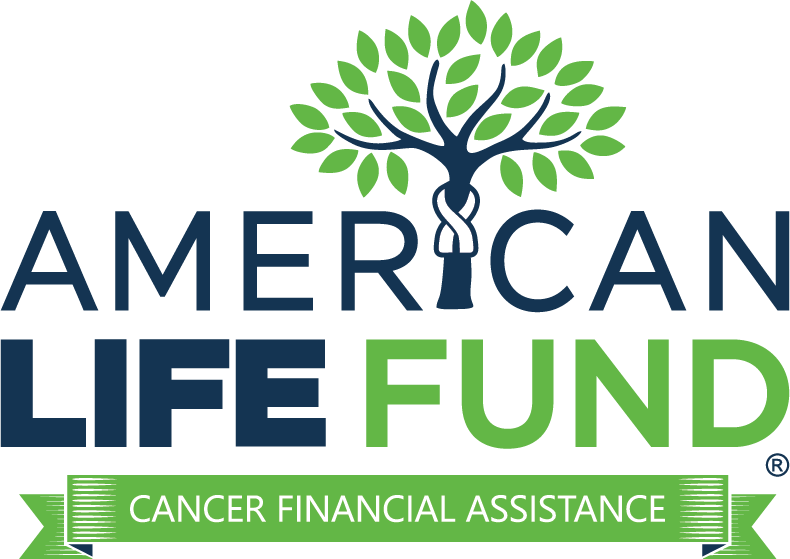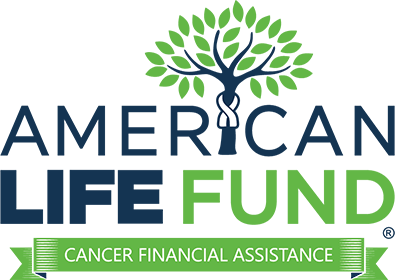“Cancer bankruptcy” is the financial hardship that often comes with cancer treatment because of its high costs. This includes expenses for chemotherapy, radiation, and newer therapies. To avoid getting overwhelmed by these costs, it’s important to understand them fully and seek help early. You can talk to healthcare providers, financial counselors, and patient advocacy groups for support and to find financial aid programs. Addressing these financial issues early can help prevent severe debt and let you focus more on recovering.

Targeted therapies, Chemo, Radiation, Secondary Expenses?
Regarding cancer treatment, costs can vary significantly depending on various factors, including the type of cancer, stage of the disease, treatment modalities, and individual circumstances.
According to a study published in the Journal of the National Cancer Institute, the cost of cancer treatments has been rising steadily over the years, placing a substantial burden on patients and their families. The study revealed that between 1995 and 2013, the average monthly cost of cancer treatment increased by 39%, surpassing the inflation rate. These costs contribute to the financial strain experienced by individuals and can significantly impact their overall well-being.
Specific cancer treatments, such as targeted therapies and immunotherapies, are often among the most expensive. These innovative treatments have revolutionized cancer care, improving patient outcomes. However, they also come with high price tags. For instance, a single course of certain immunotherapies can cost tens of thousands of dollars, with treatment durations spanning several months or even years.
Chemotherapy, a commonly used treatment modality for various cancers, can also contribute to significant expenses. The cost of chemotherapy drugs varies widely, with some newer agents being particularly expensive. In addition to drug costs, chemotherapy often requires: multiple cycles of treatment, outpatient visits, and supportive care measures, all of which contribute to the overall financial burden.
Radiation therapy, another important component of cancer treatment, can also be costly. The expenses associated with radiation therapy include using sophisticated equipment, specialized personnel, and planning procedures. The number of treatment sessions required varies depending on the type and stage of cancer, further impacting the overall cost.
It’s important to note that these costs are not only limited to the treatment itself but also include various secondary expenses. Which may include diagnostic tests, hospital stays, specialist consultations, and supportive care services. Additionally, indirect costs, such as transportation to and from treatment facilities, childcare, and time away from work, can further strain the financial resources of patients and their families.
Navigating the financial challenges of cancer treatment requires careful planning and exploring available resources. It’s important to communicate openly with healthcare providers and financial counselors to understand the costs involved and explore potential avenues for financial assistance. Patient advocacy organizations and support groups provide valuable guidance and information on available resources.
It’s important to remember that the cost of cancer treatment should never deter individuals from seeking the care they need. If you or a loved one face financial challenges, contact healthcare providers and support organizations to explore options. Remember, your well-being is of the utmost importance, and resources and solutions are available to help you navigate the financial aspects of your cancer journey.
The Cycle of Medical Debt
The cycle of medical debt starts when people can’t fully pay their medical bills, leading to ongoing debt that grows over time. This cycle often begins with an unexpected health issue, like cancer, where the costs for treatment are high and continuous.
To cover these expenses, patients may: use savings, but as treatment goes on, the debt keeps building. Insurance may not cover all costs, leaving patients with large bills. This can lead to a downward spiral where patients struggle to pay for ongoing medical care, everyday living expenses, and mounting debts. In cases of severe illness, such as cancer, this cycle can be especially devastating, as the need for treatment is critical, but the financial burden becomes increasingly difficult to manage.
Exploring The Long-Term Consequences of Cancer Bankruptcy
Dealing with cancer bankruptcy is an immensely challenging experience, and its long-term consequences can profoundly impact individuals and families who have already endured so much. It’s essential to approach this topic sensitively, recognizing that individuals with terminal cancer may seek support and understanding during this difficult time.
- Financial Strain and Indebtedness: Cancer bankruptcy often leads to long-lasting financial strain and overwhelming indebtedness. The burden of medical bills, treatments, medications, and associated costs can accumulate rapidly, leaving individuals and families struggling to make ends meet. The weight of this debt can persist for years, affecting their financial stability and ability to plan for the future.
- Impact on Credit Score and Financial Reputation: Filing for bankruptcy can significantly impact one’s credit score and financial reputation. This can make securing loans, obtaining favorable interest rates, or even renting a home challenging. Rebuilding credit after bankruptcy takes time and careful financial management, adding a layer of complexity to the already difficult situation.
- Limited Access to Future Healthcare: Cancer bankruptcy can result in limited access to future healthcare services. Medical providers and institutions may hesitate to provide treatments or services without upfront payment or a significant deposit, creating barriers to essential care. This can lead to delayed or inadequate medical attention, further exacerbating health challenges.
- Emotional and Psychological Struggles: The financial stress caused by cancer bankruptcy can affect one’s emotional and psychological well-being. Feelings of guilt, shame, and anxiety may arise as individuals wrestle with the perception that their illness has put them in a vulnerable financial position. Coping with these emotions while dealing with a terminal illness can be immensely challenging.
- Impact on Quality of Life and Treatment Options: Financial constraints from cancer bankruptcy can limit an individual’s access to optimal treatment options and supportive care. Some may have to forgo certain treatments or experimental therapies due to their high costs, potentially affecting their quality of life and overall prognosis.
- Strained Relationships and Social Isolation: The strain of cancer bankruptcy can strain personal relationships, especially when discussing finances or seeking support. The financial burden may lead to isolation, as individuals may feel reluctant to share their struggles or ask for help. This can exacerbate feelings of loneliness and further impact emotional well-being.
- End-of-Life Planning and Legacy Considerations: Cancer bankruptcy adds a layer of complexity to end-of-life planning. Individuals may face challenges in ensuring their financial affairs are in order, leaving a lasting legacy for their loved ones, and making decisions about their healthcare and treatment preferences.
Dealing with the long-term consequences of cancer bankruptcy requires compassion, resilience, and support. While the challenges may seem overwhelming, it’s important to remember that resources are available to help. Seeking guidance from financial advisors, patient advocacy groups, and social workers can provide valuable assistance in managing the financial aftermath of cancer.

The Shocking Statistics of Cancer-Related Debt
According to the National Cancer Institute’s Annual Report to the Nation on the Status of Cancer Part 2, the economic burden faced by patients nationwide in 2019 was an astounding $21.09 billion.
Within this staggering figure, patient out-of-pocket costs accounted for $16.22 billion, while patient time costs amounted to $4.87 billion. These statistics paint a vivid picture of the immense financial strain placed upon individuals and families regarding cancer care costs. These numbers underscore the urgent need for understanding and support as we manage cancer-related healthcare debt.
Prolonged Debt Duration:
Cancer-related debt often lingers for an extended period, compounding individuals’ financial hardships. Disturbingly, two-thirds of individuals carry their cancer-related debt for over a year, and nearly 28% find themselves in debt for over three years. These statistics highlight the long-lasting financial impact that cancer can have on the lives of those affected, often continuing well beyond the completion of treatment.
Income Loss And Financial Instability:
Statistics show that many cancer patients and their families experience declining financial well-being, facing challenges in meeting daily living expenses, such as rent, utilities, and groceries. Cancer treatment can lead to significant income loss due to the inability to work during the illness. This loss of income and high treatment costs can create a downward spiral of financial instability.
Insufficient Insurance Coverage:
Despite having health insurance, many individuals find that their coverage falls short regarding cancer treatment expenses. High deductibles, copayments, and coverage limitations can leave individuals with significant out-of-pocket costs, adding to the financial strain. Moreover, some individuals may be uninsured or underinsured, making the burden even more severe.
Impact on Medical Bankruptcy Rates:
The financial burden of cancer is a significant factor contributing to medical bankruptcy rates. The high cost of cancer care, loss of income, and mounting debt can push individuals and families to the brink of financial collapse. Medical expenses are a leading cause of bankruptcy filings in some countries, including the United States.
These statistics paint a stark reality of individuals’ financial challenges with cancer-related debt. Understanding that you are not alone in this struggle and that resources are available to help you handle these difficulties is crucial.
Exploring financial assistance programs, discussing payment options with healthcare providers, and seeking support from patient advocacy groups can provide valuable guidance and relief during this challenging time. Remember, support and understanding are within reach, and together, we can work towards alleviating the burden of cancer-related debt.
Support And Resources For Managing Cancer-Related Financial Strains
Dealing with the financial strains of a cancer diagnosis can be overwhelming and disheartening. However, it’s important to remember that you are not alone in this journey. Various support systems and resources are available to help you navigate the complex landscape of cancer-related financial burdens.
- Patient Advocacy Organizations: Numerous organizations are dedicated to assisting cancer patients with financial challenges. These organizations provide guidance, information, and resources to help navigate insurance claims, negotiate medical bills, and explore financial assistance programs. Contact organizations such as CancerCare, Patient Advocate Foundation, and Cancer Financial Assistance Coalition to explore their services.
- Financial Counseling: Seeking the expertise of a financial counselor or advisor can provide invaluable assistance in managing cancer-related finances. These professionals can help you develop a budget, explore cost-saving strategies, and offer guidance on managing debt. They can also provide insights into government programs, grants, and community resources that may provide financial relief.
- Hospital Social Workers: Many hospitals have dedicated social workers who can assist with financial concerns. These professionals are well-versed in navigating the healthcare system. They can connect you with resources for financial assistance, prescription drug programs, transportation services, and other support programs specific to your situation.
- Pharmaceutical Assistance Programs: If the cost of medications is a significant burden, pharmaceutical assistance programs offered by drug manufacturers or nonprofit organizations may be able to provide access to medications at reduced or no cost. Speak with your healthcare provider or contact organizations like NeedyMeds for more information.
- Local and Community Resources: Investigate local resources within your community that offer financial assistance, such as charities, foundations, and religious organizations. These resources may provide financial aid for treatment costs, transportation, and other related expenses.
- Government Programs: Depending on your location, programs like Medicaid, Medicare, or disability benefits may provide financial support for cancer-related expenses. Explore eligibility requirements and application processes to determine your qualifications for these programs.
- Viatical Settlements: Another option is a viatical settlement. A viatical settlement involves selling a life insurance policy to a third party in exchange for a lump sum cash payment. This money can be used to cover medical expenses and other financial needs. This option can provide much-needed financial relief for individuals with a terminal illness.
Remember, emotional support is just as vital as financial assistance. Reach out to cancer support groups, online communities, and counseling services to connect with others who can empathize with your experience and provide guidance during this challenging time.

Strategies to Navigate Cancer-Related Debt
Developing effective strategies to manage your financial obligations is key. Taking proactive steps and exploring available options can alleviate some of the financial stress associated with cancer care.
Review And Understand Your Medical Bills:
Begin by carefully reviewing your medical bills to ensure accuracy. Billing mistakes are not uncommon, and correcting them can potentially reduce your overall debt. If you find any discrepancies or have questions about specific charges, please ask your healthcare provider or the billing department for clarification.
Communicate With Healthcare Providers:
Open and honest communication with your healthcare providers is recommended. Discuss your financial concerns and inquire about available financial assistance programs or payment plans to cover medical costs. Many hospitals and medical centers offer flexible payment options, discounted services, or financial aid programs to help alleviate the burden of medical expenses.
Create a Budget And Prioritize Expenses:
Develop a realistic budget that reflects your current financial situation. Prioritize essential expenses such as housing, utilities, and food while identifying areas where you can cut back or find cost-saving strategies. Seek guidance from a financial counselor or advisor to help create a comprehensive budget plan, considering your unique circumstances.
Seek Legal Advice, if Necessary:
Consulting with a legal professional may be necessary when insurance disputes, medical debt, or other legal matters arise. Seek legal aid organizations or pro bono clinics specializing in healthcare or consumer law to explore your options and receive guidance on navigating legal challenges.
Reach Out For Emotional Support:
Managing cancer-related debt can take a toll on your emotional well-being. Remember to seek emotional support through cancer support groups, counseling services, or online communities. Connecting with others who have gone through similar experiences can provide empathy, guidance, and a sense of belonging during this challenging time.
By implementing these strategies and seeking appropriate support, you can navigate the complexities of cancer-related debt and regain control over your financial situation. Remember, you are not alone; resources are available to help you through this journey. Stay proactive, stay informed, and prioritize your well-being as you work towards financial stability and peace of mind.
The Role of Health Insurance in Cancer Treatment
Health insurance plays a big role in managing the costs of cancer treatment. It helps cover expenses for doctor visits, treatments, and medications. However, the specifics of the health insurance system, like co-pays and coverage limits, vary, so it’s important to talk to your insurance provider to know what’s covered.
When insurance and savings aren’t enough, viatical settlements are an option. This means selling your life insurance policy to a viatical settlement company like American Life Fund to receive immediate cash, which you can use for any need. This option provides financial relief quickly.
Destigmatizing Cancer Bankruptcy And Encouraging Compassionate Conversations
We understand that the journey of facing cancer-related bankruptcy can be incredibly challenging, both emotionally and financially. We want you to know that you are not alone in this experience. We aim to destigmatize the topic of cancer bankruptcy and create a space where compassionate conversations can flourish, providing understanding and support to those navigating the financial burdens of cancer care.
It’s important to remember that facing financial hardships due to cancer is not a personal failure. Cancer is a complex and challenging journey that impacts every aspect of your life, including your finances. Opening up about these challenges and sharing your experiences can help destigmatize cancer bankruptcy and encourage others to do the same.
If you’re navigating cancer-related financial hardships, we want to remind you that resources are available to assist you. Patient advocacy organizations, financial counseling services, and support groups are there to offer guidance and support. It’s crucial to reach out and seek the assistance you need, as you should never have to face this journey alone.
In our collective efforts to destigmatize cancer bankruptcy, let’s foster compassionate conversations and create an environment of understanding and support. By offering empathy and sharing our stories, we can help one another through the challenges of cancer care and work towards systemic changes that address the financial struggles individuals and families face.

What is financial toxicity in relation to cancer?
Financial toxicity refers to the financial burden and stress experienced by individuals and families due to the high costs associated with cancer treatment, such as medical bills, medications, and other healthcare expenses.
How does private health insurance affect breast cancer patients facing financial distress?
Private health insurance coverage varies in terms of cost sharing, which can impact the financial burden on breast cancer patients. While insurance may cover some expenses, out-of-pocket costs like deductibles and copayments can still lead to financial distress.
Are there resources available to help prostate cancer patients with financial challenges under the Affordable Care Act?
Yes, the Affordable Care Act provides provisions aimed at improving access to healthcare and reducing financial strain for cancer patients, including those with prostate cancer. Patients can explore options such as subsidies for insurance premiums and expanded Medicaid eligibility.
What are some solutions to prevent cancer bankruptcy for individuals facing financial hardship?
Solutions include seeking financial assistance programs offered by hospitals or nonprofits, negotiating medical bills, exploring government assistance programs, and consulting financial counselors or social workers specializing in cancer care. Additionally, individuals can consider creating a budget and exploring alternative, more affordable treatment options.





